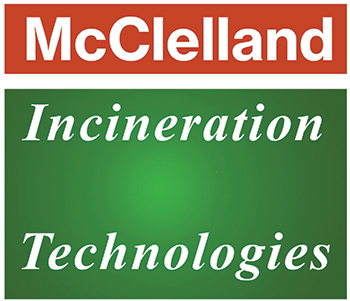 Introduction
Introduction
Waste-to-Energy (WtE) represents a dynamic approach at the intersection of waste management and sustainable energy production. At its core lies the evolution of industrial incinerators—once solely viewed as waste disposal units, now pivotal to the global shift toward resource recovery and thermal waste management.
In this article, we explore how modern incinerators are shaping the future of sustainable waste management in India and globally.
Looking for an experienced incinerator supplier in India or exploring advanced industrial incinerator solutions? Visit www.mcclellandindia.com. Based in Mumbai, Mc Clelland Engineers delivers projects across India, including Gujarat, Maharashtra, and other key industrial hubs.
Understanding Waste-to-Energy and Incineration
What Is Waste-to-Energy?
Waste-to-Energy (WtE) is the process of converting various forms of waste into usable energy—such as heat, electricity, or steam—through controlled incineration.
Modern hazardous waste incinerators are equipped with advanced emission control technologies that ensure safe, efficient waste disposal while enabling resource recovery. The heat generated powers turbines to produce electricity or supports industrial processes.
In addition, valuable materials—such as metals—can be recovered post-combustion, supporting a circular economy approach.
Learn more about our industrial incinerator solutions.
 Types of Industrial Incinerators
Types of Industrial Incinerators
Different incinerator technologies cater to diverse waste streams and sustainability goals:
Mass-Burn Incinerators: Efficiently combust municipal solid waste (MSW) to produce heat or steam.
Gasification Incinerators: Convert waste into syngas, enabling higher energy efficiency and reduced emissions.
Fluidized Bed Incinerators: Improve combustion at lower temperatures, minimizing pollutant formation.
Pyrolysis Units: Thermally decompose waste in an oxygen-free environment, producing gases, oils, and reusable solids.
Understanding these technologies helps industries implement the most suitable waste-to-energy solutions.
Environmental Impact and Emission Reduction
 Advanced Emission Control Technologies
Advanced Emission Control Technologies
Today’s hazardous waste incinerators feature robust emission control systems to meet stringent environmental regulations in India and internationally.
Key systems include:
Baghouse Filters & Scrubbers: Remove particulates and acid gases.
Selective Catalytic/Non-Catalytic Reduction (SCR/SNCR): Minimize NOx emissions.
Optimized Combustion Control: Reduce formation of dioxins, VOCs, and other harmful by-products.
These advanced technologies ensure that industrial incinerators contribute positively to sustainable waste management in India.
Community Engagement and Regulatory Framework
Community Involvement and Transparency
Community trust is key for the success of any waste-to-energy project. Transparent communication about emission control, health safety, and environmental benefits fosters acceptance of incinerator projects.
Public education helps dispel misconceptions and highlights the role of modern incinerators in building a cleaner future.
Government Policy and Support
India’s government policies are increasingly supportive of advanced incinerator technologies. Regulatory frameworks define emission standards, waste handling protocols, and offer incentives for adopting sustainable waste management practices.
As a leading industrial incinerator supplier in India, Mc Clelland Engineers aligns with national goals for cleaner production and circular economy integration.
Energy Generation and Greenhouse Gas Reduction
Industrial incinerators play a crucial role in reducing greenhouse gas (GHG) emissions by:
Diverting waste from landfills (reducing methane emissions).
Recovering energy from waste that would otherwise be lost.
Offsetting fossil fuel consumption with renewable thermal energy.
When equipped with the latest emission control technologies, waste-to-energy plants help industries meet India’s climate action goals.
Addressing Concerns and Misconceptions
Public Health and Air Quality
Properly regulated incineration plants with modern controls pose minimal risk to public health. Systems such as baghouse filters, scrubbers, and real-time emission monitoring maintain safe air quality.
Studies from the World Health Organization (WHO) support the effectiveness of modern waste-to-energy processes in protecting public health.
Comparing Incineration with Alternatives
Compared to landfilling:
Incineration reduces waste volume by up to 90%.
Prevents methane emissions.
Enables energy recovery.
Compared to recycling, incineration offers advantages for contaminated or non-recyclable waste. A balanced approach—combining reduction, recycling, and energy recovery—is key to optimal sustainable waste management.
Future Perspectives and Innovations
Emerging Technologies and Circular Economy Integration
 Next-generation incinerator innovations include:
Next-generation incinerator innovations include:
Advanced gasification.
Plasma arc gasification.
AI-driven combustion optimization.
Integrating industrial incinerators into a circular economy emphasizes resource efficiency—recovering materials, reducing emissions, and supporting sustainable production cycles.
Conclusion
Modern industrial incinerators are essential to India’s transition toward sustainable waste-to-energy solutions. They:
Enable energy recovery from waste.
Support resource conservation.
Reduce reliance on landfills.
Help industries meet environmental compliance.
As India’s industries adopt cleaner thermal waste management practices, advanced incinerator technologies will continue to drive innovation and sustainability.
Looking for customized waste-to-energy solutions? Contact Mc Clelland Engineers—your trusted incinerator supplier in India.
About Mc Clelland Engineers Pvt. Ltd.
Mc Clelland Engineers Pvt. Ltd. is a leading industrial incinerator supplier in India. We design and deliver hazardous waste incinerators and thermal waste management solutions for industries across India and globally.
Visit us at www.mcclellandindia.com to learn more.

